Knowledge Hub
Ethnic Preparation of Chubitchi, an Alcoholic Beverage of the Garo Tribe of Meghalaya: A Sociocultural Analysis
2021
Author(s): Marak S R , Sharma D , Sarma H
This paper deals with the traditional preparation of Chubitchi by the Garo tribe, which is a vital part of their culture, and also examines the sociocultural significance of the beverage.
Traditional Knowledge and Biodiversity Conservation in the Sacred Groves of Meghalaya
2006
Author(s): Jeeva S , Mishra BP , Venugopal N ,Kharlukhi L, Laloo RC
This study shows how the Meghalaya Sacred Groves are considered to be the most species-rich areas for plants, birds and mammals. The mythological stories and indigenous knowledge associated with the groves have been the principal factor in preserving the sacred groves in the immaculate condition.
Plant Indicators for Agricultural Seasons Amongst Pnar Tribe of Meghalaya
2006
Author(s): Samati H, Begum SS
The work relates to Pnar tribe of Jaintia Hills district, Meghalaya, whose main occupation is agriculture. Even today they depend on plant species as indicators, such as Butea buteiformis (Voigt) Grier. & Long, Castanopsis indica A. DC., Castanopsis tribuloides (Sm.) DC., Phoenix humilis Royle ex Becc. & Hook. f., Pinus kesiya Royle ex Gord., Quercus serrata Thunb., Schima wallichii (DC.) Korth. for systematizing steps they followed season wise for achieving the best productivity of rice and other agricultural crops.
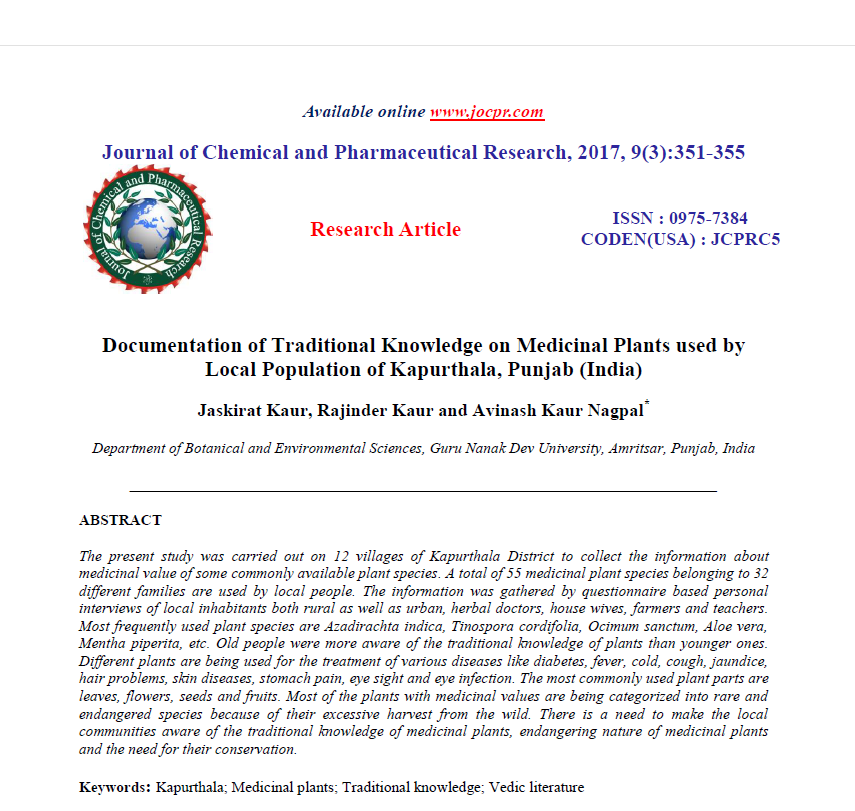
Documentation of Traditional Knowledge on Medicinal Plants used by Local Population of Kapurthala, Punjab (India)
2017
Author(s): Kaur J, Kaur R and Nagpal AK
A total of 55 medicinal plant species belonging to 32 different families are used by local people. The information was gathered by questionnaire based personal interviews of local inhabitants both rural as well as urban, herbal doctors, house wives, farmers and teachers. Most frequently used plant species are Azadirachta indica, Tinospora cordifolia, Ocimum sanctum, Aloe vera, Mentha piperita, etc.
Traditional Knowledge Associated with Fish Harvesting Practices of War Khasi Community of Meghalaya
2008
Author(s): Tynsong H , Tiwari BK
The paper reports and analyses the findings of Traditional Ecological Knowledge associated with fish harvesting practices of War Khasi community, a sub tribe of Khasi, inhabiting southern slopes of Meghalaya.
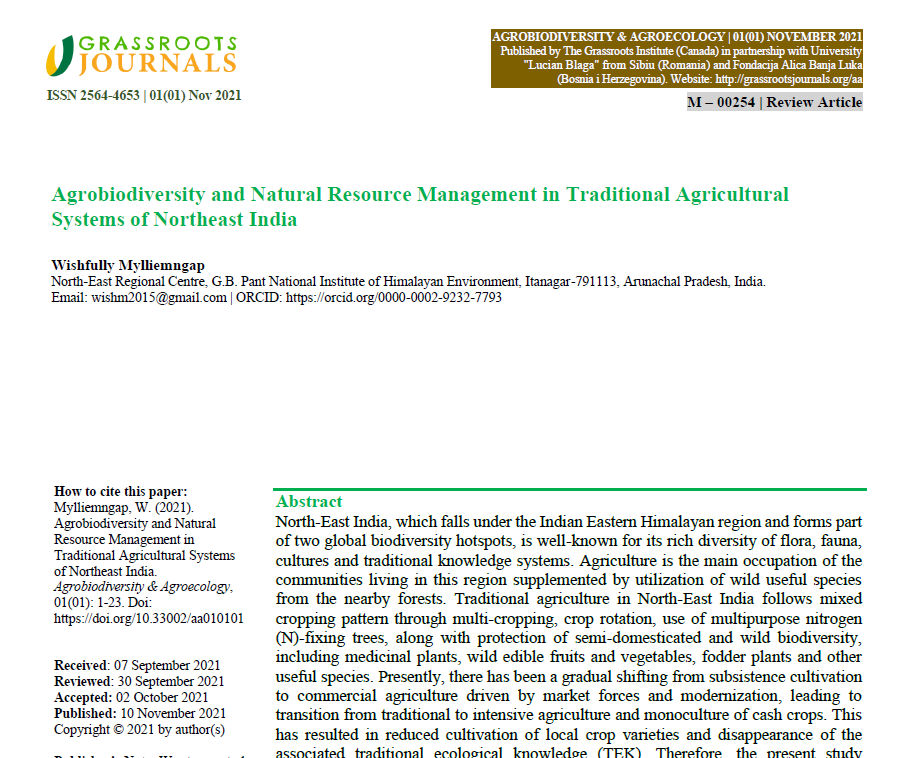
Agrobiodiversity and Natural Resource Management in Traditional Agricultural Systems of Northeast India
2021
Author(s): Mylliemngap W
This paper highlights there has been a gradual shifting from subsistence cultivation to commercial agriculture driven by market forces and modernization, leading to transition from traditional to intensive agriculture and monoculture of cash crops.
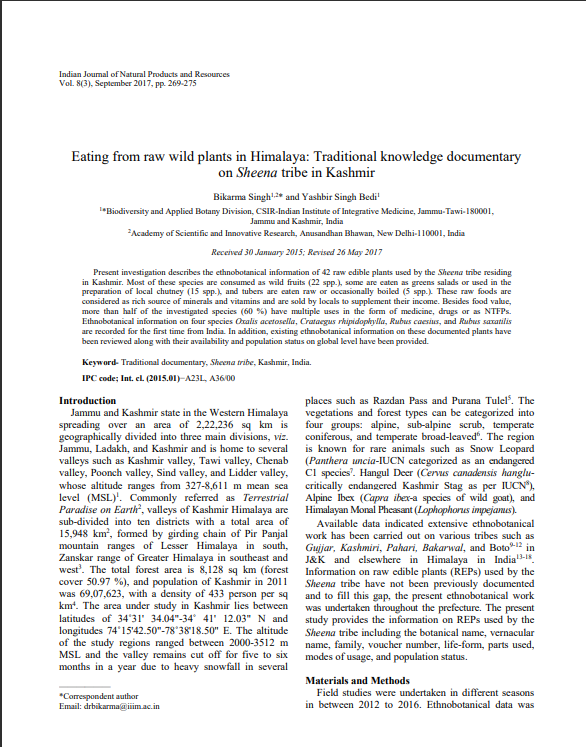
Eating from Raw Wild Plants in Himalaya: Traditional Knowledge Documentary on Sheena Tribe in Kashmir
2017
Author(s): Singh B, Bedi YS
This paper describes the ethnobotanical information of 42 raw edible plants used by the Sheena tribe residing in Kashmir. Besides food value, more than half of the investigated species (60 %) have multiple uses in the form of medicine, drugs or as NTFPs.
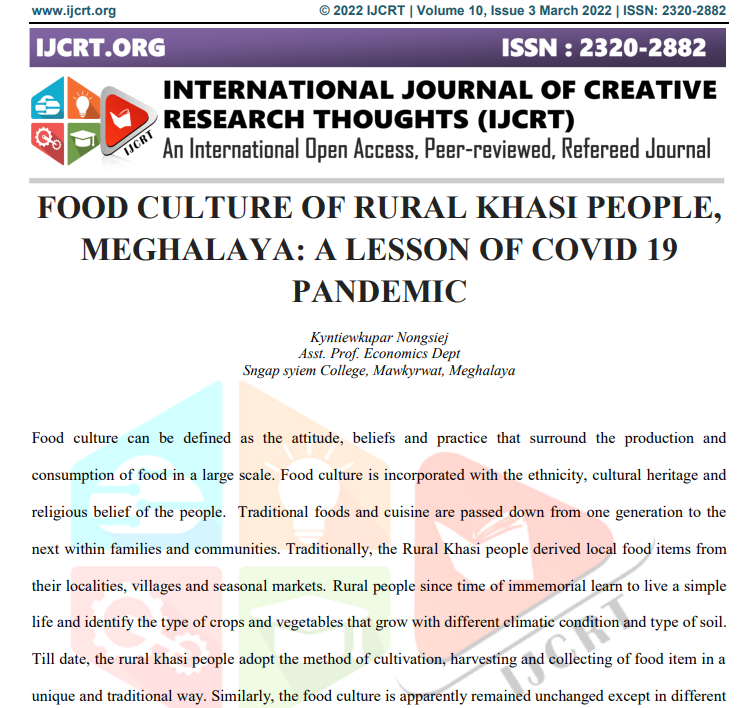
Food Culture of Rural Khasi People, Meghalaya: A Lesson of Covid 19 Pandemic
2022
Author(s): Nongsiej K
The article highlights that the Covid 19 Pandemic changed people’s perception and many rural household in the villages of South West Khasi Hills District of Meghalaya went back to the traditional food culture of the previous century.
Traditional Agricultural Practices in Meghalaya, North East India
2006
Author(s): Jeeva SRDN, Laloo RC , Mishra BP
The paper deals with traditional farming systems practiced by indigenous communities of Meghalaya. Majority of tribal people (ca. 83 per cent) in the state is engaged in agriculture. The shifting cultivation and terrace (bun) agriculture are two major farming systems, prevalent in Meghalaya.
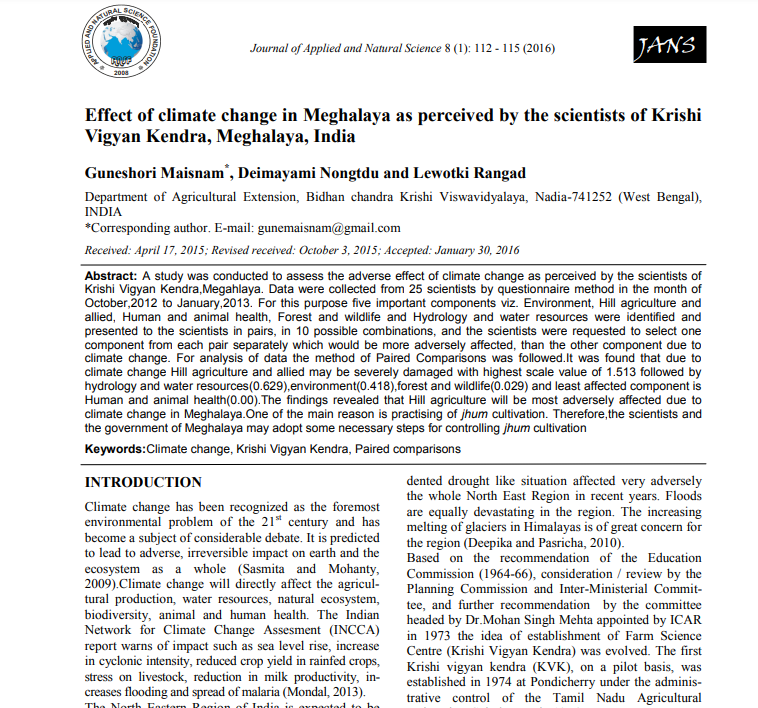
Effect of Climate Change in Meghalaya as Perceived by the Scientists of Krishi Vigyan Kendra, Meghalaya, India
2016
Author(s): Maisnam G, Nongtdu D, Rangad L
This study was conducted to assess the adverse effect of climate change as perceived by the scientists of Krishi Vigyan Kendra, Meghalaya.



